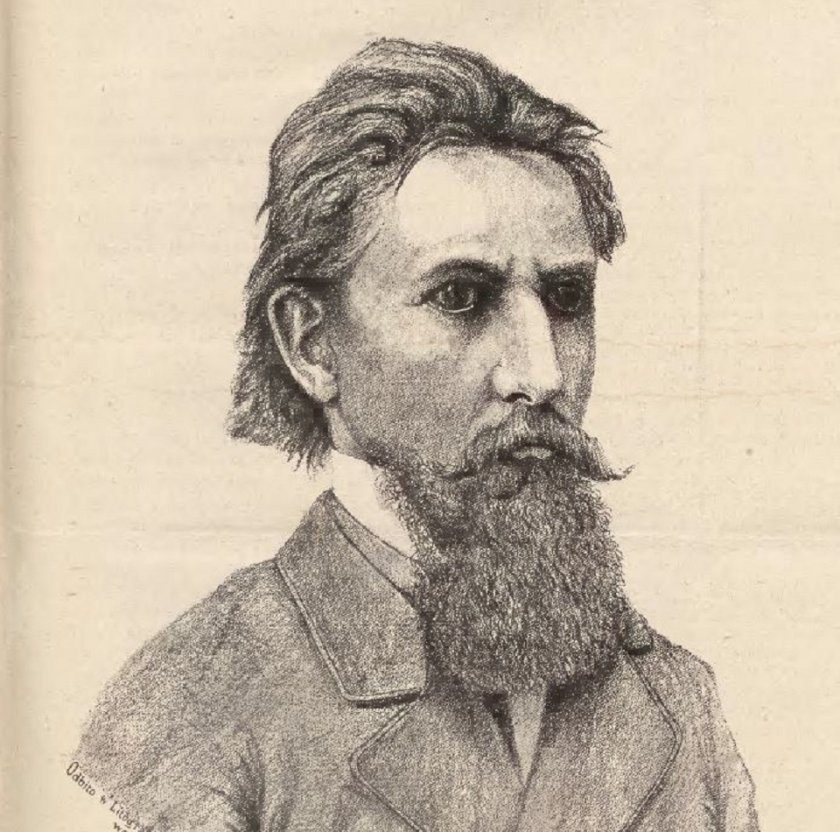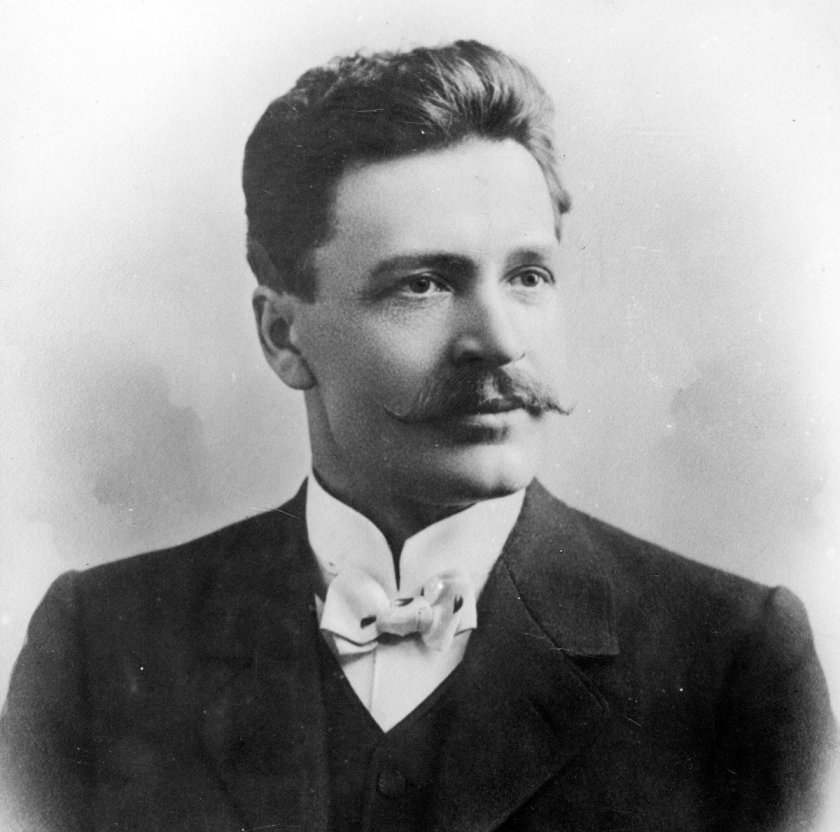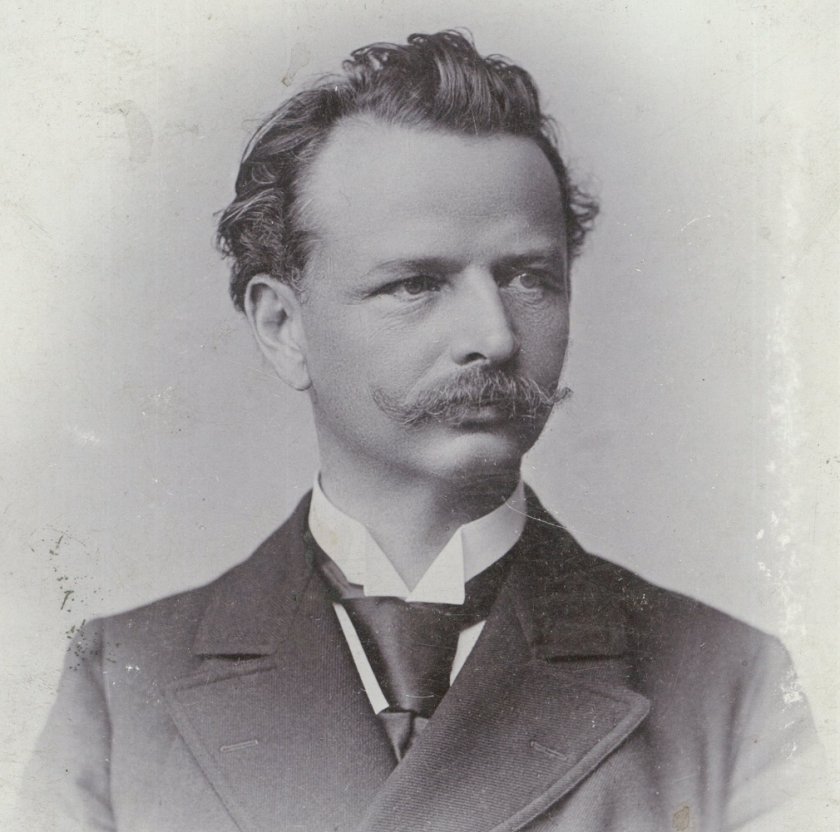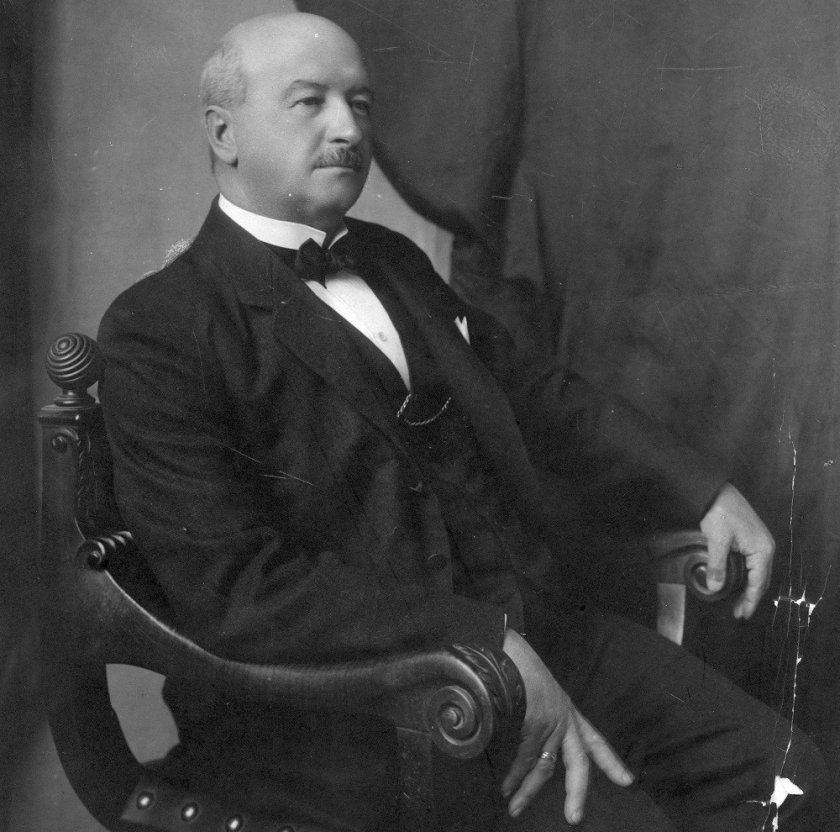Franciszek Rychnowski
 Fot.
Fot.
His modern radiators were used in the heating system at the Sapieha Palace in Krasiczyn before they were presented to the general public in Paris. The interest in the invention shown in Paris was enormous and resulted in two prestigious awards: a gold and a silver medal at the Fair.
The under-30-year-old Iks von Chyr also gained membership of the French Academy. Thus began the staggering career of one of the most talented Polish inventors of the late 19th and early 20th centuries.
Franciszek Rychnowski, as he is referred to here, using an anagram of his surname Iks von Chyr (which reads backwards as Rychnovski), was born on 3 October 1850 in Velehrad, Moravia, to Antoni Rychnowski and Józefa, nee Juepfer. He was educated at the Piarists' boarding school and then continued his education at Vienna College of Technology. After his studies, he served his apprenticeship in the Austrian Tyrol and in 1877 he left for Lviv, where he settled permanently.
Under the Lviv High Castle he opened a mechanical workshop and also engaged in photography. Rychnowski's extensive collection of photographs illustrating everyday life in Lviv has survived from that period.
Franciszek Rychnowski, as he is referred to here, using an anagram of his surname Iks von Chyr (which reads backwards as Rychnovski), was born on 3 October 1850 in Velehrad, Moravia, to Antoni Rychnowski and Józefa, nee Juepfer. He was educated at the Piarists' boarding school and then continued his education at Vienna College of Technology. After his studies, he served his apprenticeship in the Austrian Tyrol and in 1877 he left for Lviv, where he settled permanently.
Under the Lviv High Castle he opened a mechanical workshop and also engaged in photography. Rychnowski's extensive collection of photographs illustrating everyday life in Lviv has survived from that period.
Rychnowski's installation of a heating, ventilation and lighting system in the newly constructed building of the Diet of the Kingdom of Galicia and Lodomeria (1879) brought him great respect in Lviv and more generally in the Austrian scientific community. It used dynamos powered by two four-horsepower gas engines to generate power.
Although the pioneering system worked, it often malfunctioned and required repairs, which Rychnowski himself carried out at night. Nevertheless, the success in Lviv resulted in more orders for Iks von Chyr, both in Lviv and beyond. In Krakow, he is remembered as the creator of the modern heating system installed in the restored Cloth Hall. As far as practical devices developed by Rychnowski are concerned, we should mention the design of a mechanized kitchen using gas power.
Although the pioneering system worked, it often malfunctioned and required repairs, which Rychnowski himself carried out at night. Nevertheless, the success in Lviv resulted in more orders for Iks von Chyr, both in Lviv and beyond. In Krakow, he is remembered as the creator of the modern heating system installed in the restored Cloth Hall. As far as practical devices developed by Rychnowski are concerned, we should mention the design of a mechanized kitchen using gas power.
An exclusive example of the kitchen installation was prepared in his workshop in Lviv for several thousand crowns for the Romanian King Charles I of the Hohenzollern-Sigmaringen dynasty. It was used in the royal castle in Sinaia. The greatest interest was aroused by his work on the so-called electroid, which was the subject of heated debates within the walls of the Lviv Technical Academy, Vienna College of Technology and the Jagiellonian University. According to Rychnowski, this invention could have found application in the treatment of certain medical conditions, which, however, faced opposition from the medical community.
Rychnowski made a special contribution by working for the Lviv Chamber of Commerce and Industry, engaging in the work of a special committee formed on the initiative of its authorities, bringing together Galician industrialists and distinguished and recognised inventors.
Rychnowski made a special contribution by working for the Lviv Chamber of Commerce and Industry, engaging in the work of a special committee formed on the initiative of its authorities, bringing together Galician industrialists and distinguished and recognised inventors.
This committee was established in 1885 to analyse the draft of the Austrian patent law. Rychnowski's experience and knowledge proved to be crucial for the effects of the committee's work, which was widely recognised by the authorities of this most prominent economic institution in Eastern Galicia.
The events that took place at the turn of 1918, during the Polish-Ukrainian war fought on the streets of Lviv and in Eastern Galicia, left a strong mark on Franciszek Rychnowski's life. During the Battle of Lviv, his laboratory was destroyed by an explosion of grenades thrown inside by Ukrainian soldiers. Machinery and prototypes of some inventions were destroyed. Rychnowski himself joined the Polish civic guard, and became its commander. The tasks of this formation included guarding public order and catching common criminals taking advantage of the chaos of the war.
The events that took place at the turn of 1918, during the Polish-Ukrainian war fought on the streets of Lviv and in Eastern Galicia, left a strong mark on Franciszek Rychnowski's life. During the Battle of Lviv, his laboratory was destroyed by an explosion of grenades thrown inside by Ukrainian soldiers. Machinery and prototypes of some inventions were destroyed. Rychnowski himself joined the Polish civic guard, and became its commander. The tasks of this formation included guarding public order and catching common criminals taking advantage of the chaos of the war.
Rychnowski died on 3 July 1929 in his beloved Lviv. His funeral, however, took place in Krakow. The body was laid to rest at the Rakowicki Cemetery in the family grave of his wife Maria, nee Dutkiewicz. After her death three years later, the Rychnowskis' Lviv townhouse, then located at 15 Chorążczyzny street, was bequeathed to the Volunteer Rescue Association in Lviv.
The numerous publications written by Iks von Chyr also bear witness to his uniqueness. Most of them were scientific, others popularising, and still others historical and memorial texts. The list of his works also included futuristic and utopian descriptions.
The numerous publications written by Iks von Chyr also bear witness to his uniqueness. Most of them were scientific, others popularising, and still others historical and memorial texts. The list of his works also included futuristic and utopian descriptions.
Some of them contained quite controversial opinions and theses, for which Rychnowski was famous. Among the most important publications written by Iks von Chyr is Omnia in sole. Reminiscencje naukowe [Scientific Reminiscences] (Lviv 1922), Popularny i krytyczny pogląd na istotę nauki ścisłej i jej wyniki społeczne (Lviv 1924), and also Mane tekel fares. 44 wspomnienia z przeszłości. Fragmenty wyników z czterdziestoletnich zabiegów leczniczych pod akademicką nazwą kurfuszerstwa, szarlatanerii i oszukańczej sugestii [Mane tekel fares. 44 memories of the past] (Lviv 1922).
An unusual curiosity is a futurist and utopian work written by Rychnowski during the siege of Lviv at the turn of 1918 and 1919, entitled Co będzie w r. 2913? 1000 lat później (Lviv 1919). And although this publication did not reach wider public, it should be noted that some of the issues it addressed were proof of the visionary mind of its author.
An unusual curiosity is a futurist and utopian work written by Rychnowski during the siege of Lviv at the turn of 1918 and 1919, entitled Co będzie w r. 2913? 1000 lat później (Lviv 1919). And although this publication did not reach wider public, it should be noted that some of the issues it addressed were proof of the visionary mind of its author.



